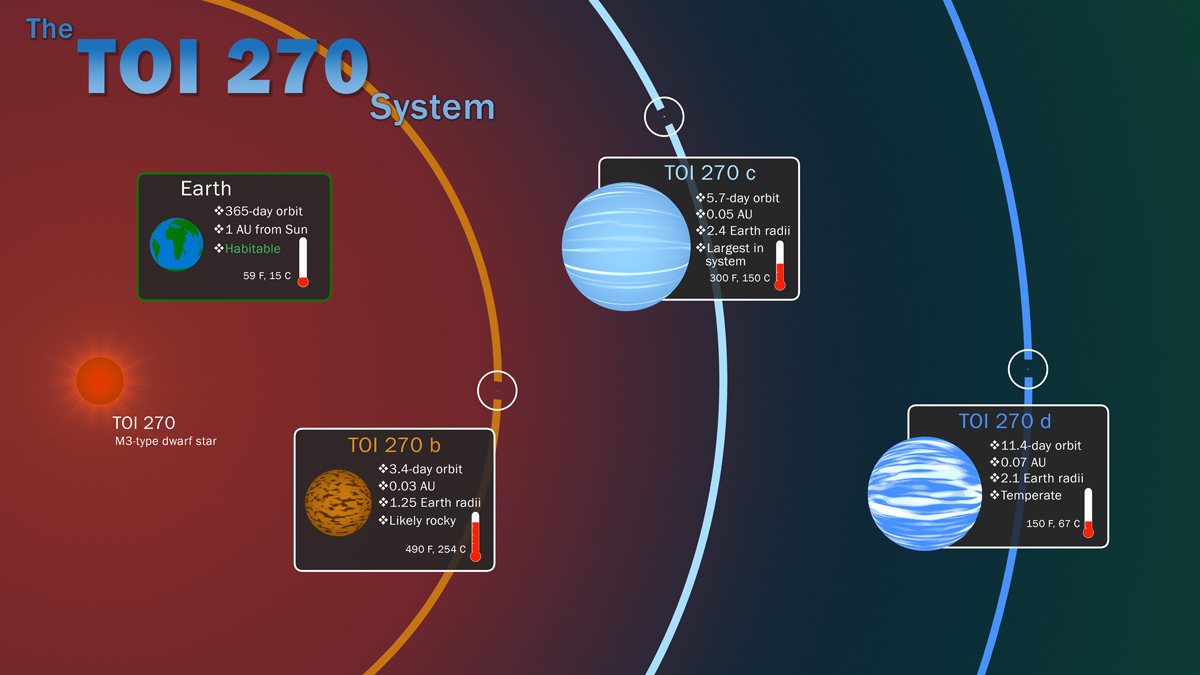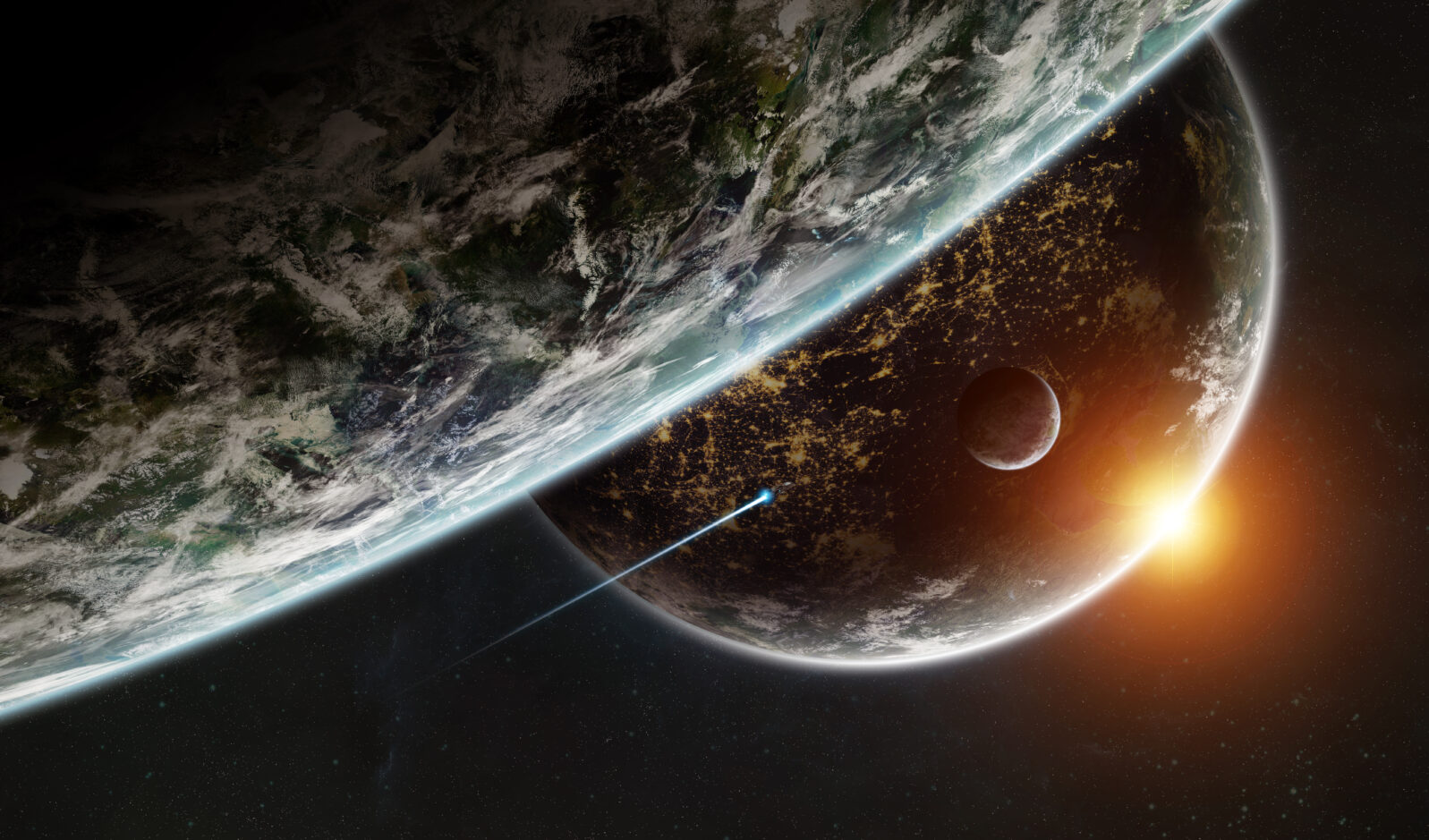We Are Warned: Don’t Try To Colonize Super-Earths
Theoretical astrophysicist Ethan Siegel tells us why he thinks it would end in disasterAccording to NASA, super-Earth planets are “a class of planets unlike any in our solar system – are more massive than Earth yet lighter than ice giants like Neptune and Uranus, and can be made of gas, rock or a combination of both. They are between twice the size of Earth and up to 10 times its mass.” Such plants are common in our galaxy and so far we have discovered 1,342 of them. Some are hot enough to vaporize metal; some are dim and frozen.
An infographic from NASA of the TOI 270 system provides examples of super-Earths in relation to Earth:

From NASA: “This infographic illustrates key features of the TOI 270 system, located about 73 light-years away in the southern constellation Pictor. The three known planets were discovered by NASA’s Transiting Exoplanet Survey Satellite through periodic dips in starlight caused by each orbiting world. Insets show information about the planets, including their relative sizes, and how they compare to Earth. Temperatures given for TOI 270’s planets are equilibrium temperatures, calculated without the warming effects of any possible atmospheres. Credit: NASA’s Goddard Space Flight Center/Scott Wiessinger”
So why are super-Earths likely not habitable? In our own solar system, Ethan Siegel reminds us, we find small clearly distinct rocky planets and gas giants. However, our most successful planet-hunting missions are mostly coming up with planets that are in between:
Planets of any mass and radius can be located close to their parent stars. We’ve discovered planets smaller than Mercury with very tight orbital periods, completing a revolution around their central star in under a day. We’ve also discovered planets many times the mass of Jupiter that orbit their central stars in just a few days or even less: the “hot Jupiters” of the galaxy. And, of course, the most common type of world we found — mind you, because those are the worlds that our planet-finding techniques are most sensitive to — are the so-called “super-Earths,” which range from about two to ten Earth masses.
Ethan Siegel, “This Is Why You Must Never Try And Colonize A Super-Earth Planet” at Forbes (Jan 27, 2021)
He thinks that the term “super-Earth” is unfortunate because it creates the impression that these planets are like Earth, only bigger. But if the mass of the planet is much greater than that of Earth, some dire changes — from the perspective of habitability — may be expected:
… most planets will remain rocky so long as their mass remains below a certain value. Raise their mass beyond a particular threshold, and they’ll be able to start holding onto volatiles: very light gases like hydrogen and helium. Gather enough total mass together in one place, and that planet will start growing much more rapidly than the others around it, like a cosmic vacuum cleaner clearing out the material from anywhere in proximity to its orbit. With so much mass in one place, the very atoms inside that planet will start to compress; this gravitational self-compression should create a new population of gas giant planets. And if that mass gets too large, rising above another critical threshold, it will ignite nuclear fusion in its core, transitioning from a planet to a full-fledged star.
Ethan Siegel, “This Is Why You Must Never Try And Colonize A Super-Earth Planet” at Forbes (Jan 27, 2021)
Surprisingly, perhaps, just double the mass of Earth is enough to start this transition, according to researchers:
For a comparable density to our planet (a little over ~6 g/cm3), that means a planet can only have about a ~30% larger radius than ours does and still be rocky. Beyond that, it will have a substantial envelope of volatile gases around it, with thousands to millions of times the atmospheric pressure of Earth at its rocky surface.
Ethan Siegel, “This Is Why You Must Never Try And Colonize A Super-Earth Planet” at Forbes (Jan 27, 2021)
A super-Earth, he says, is really more of a mini-Neptune than a giant Earth—unless the planet is so close to its sun that all atmosphere has boiled away already, leaving only the rocky core in orbit. Either way, we would not survive the atmospheric conditions.
It seems that our solar system is unusual in that it doesn’t have these super-Earths (or mini-Neptunes, if you like). It does have one rocky planet ideally suited for life, if we have enough sense to keep it that way.
Note: Some ways that Earth appears well-suited to life include “While other planets have an orbiting moon; ours is critical to our existence. Our large Moon is just the right size to stabilize Earth’s orbit and rotation, limiting the variations in our climate and temperature. Without a large moon, the axis of our planet would likely have wobbled dramatically—perhaps by as much as 90 degrees. The role of the Moon cannot be underestimated.”
Here are some short science fiction films on the quest for new planets theme:
Sci Fi Saturday: Can a Robot Find a Better Planet Than Earth? The trouble is, the robot is governed by Isaac Asimov’s three laws of robotics. After 55 habitable planets, the—by then very old—fellow is beginning to suspect something about the robot’s judgment.
and
Sci-Fi Saturday film: “Alone” at DUST. Space engineer Kaya Torres, the only survivor of a black hole, contacts an “interstellar penpal” to keep her company until she dies. She manages a desperate escape but then experiences one of the astonishing implications of time travel.
